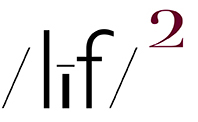all photos (embiggenable)
“Photography takes an instant out of time, altering life by holding it still.” ~ Dorothea Lange
“Taking pictures is savoring life intensely every hundredth of a second.” ~ Marc Riboud
“We are making photographs to understand what our lives mean to us.” ~ Ralph Hattersley
“Your photography is a record of your living, for anyone who really sees.” ~ Paul Strand
BEGINNING WITH THE VERY FIRST PHOTOGRAPH I ever made, I can truthfully write that I never made a photograph–personal as opposed to commercial–that was driven by the desire to convey a meaning. Over time, as I advanced in my pursuit of so-called Fine Art Photography, I pursued my picture making with the belief that photography is a visual art and therefore my picture making objective objective was/is to make photographs that are “interesting”–in some manner or another–to look at / view. Photographs that exhibit what something looks like when photographed in a manner in which I see it.
To be certain, an interesting photograph that incites an emotional reaction / feeling might also, concomitantly, incite word-thoughts which can be expressed verbally. That written, it is a commonly held belief that any emotional and/or word-thought reactions to a photograph are primarily influenced by what the viewer brings to the table– as Sontag wrote … “inexhaustible invitations to deduction, speculation, and fantasy”.
If a viewer of my work were to spectulate that my photographs left them with the meaning that beautiful / interesting form can be found in the most mundane of things, I would respond by stating that I am happy you feel that way.
All the above written, I can write that, re: my eye and sensibilities, I am comfortable with the fact that I know the answer to the question, What is a photograph? However, the question to which I do not have the definitive answer is, Why do I make photographs?
That is not to write that I have never thought about the why of it. In fact, I think about it every time I have to write an artist statement to accompany an exhibit or a photo book. Inevitably, such statements will refer to my attraction to the form I see in the quotidian world; a statement which is true as far as it goes and is almost always appropriate. Nevertheless ….
…. at this point in my life, let’s refer to it as late in life, with multiple thousands of photographs in my photo library, I am wrestling with the idea of; a) what do I do with all the photographs, posterity wise? and b) why have I made so many photographs?
Inasmuch as I have made photos nearly everyday over the last 25 years, it is no surprise that I make a lot of photographs. While some might think this activity is some sort of obsessive behavior, I attribute it to the fact that my eye and sensibilities are very sensitive to / aware of the seemingly everywhere form I see that can be photographically extracted from the everyday world. Inasmuch as I live my life with eyes wide open–literally + figuratively–it is almost like a sensory overload. The potential for picture making is nearly inexhaustible so I make a lot of photographs.
WARNING: Psychological mumbo-jumbo to follow.
Let me try to string together the quotes at the top of this entry…
Inasmuch as Photography takes an instant out of time, altering life by holding it still, it stands to reason that Taking pictures is savoring life intensely every hundredth of a second. Ya know, kinda like Evans’ delights of seeing; the defining of observation full and felt.
That written, I must confess that, when making a photograph, I can not write that I am savoring life at the picture-making moment inasmuch as I have never been able to stare at a blade of grass and see the secrets of the universe. That’s cuz, in part, time marches on. Fortunately, one of photography’s magic tricks is that it can “stop” time and with the production of a print that depicts that stoppage, the maker of the photograph–and possibly other viewers–can, indeed, savor the moment over and over.
Does anyone make photographs to understand what our lives mean to us? In all probability, some do–or try to–but, I do not. Nevertheless, it is quite possible that, buried deep in my subconscious, I am making photographs to understand / reassure myself that I am still alive. Not that I am clinging to life by a thread by any measure but, it’s a thought, albeit an unconscious one.
As for Strand’s notion that Your photography is a record of your living, for anyone who really sees, I suppose that, at least in my case, that’s true if he meant the word “living” to be a question of what gives a life a sense purpose, significance, and value; in pursuing knowledge, creating art, or experiencing profound moments of awe and connection.
Which is not to write that making photographs is my raison d'être but it is difficult to imagine what my life would be without it.

